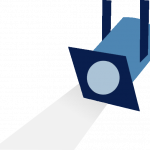12.2: Synthesizing Sources
A major barrier to research in the workplace is time. If you are asked to research something, it’s because it’s really important to your organization. Usually, you are expected not just to summarize sources but to provide your own analysis. Consider asking the following questions:
- What parts of them do you agree with?
- What parts of them do you disagree with?
- Did they leave anything out?
In addition to analyzing information from sources, try to engage in synthesis — perhaps by combining arguments from different sources or by combining arguments from sources with your own intuitions (based on your prior knowledge and experience). Bring ideas together to make something new or to find a new way of looking at something old. At work, you will often be asked to consider the way that your business has always done something and to suggest potential improvements. You might draw on your experience in a different company to provide a fresh perspective, or, you might remember a blog post you read and combine that with an idea from a conference presentation you watched to solve a unique problem your workplace has faced.
Getting Better at Synthesis
To practice synthesis, you should look for connections and patterns. One way to synthesize when writing an argument essay, paper, or other project is to look for reoccurring themes in your sources. Try to categorize ideas by topic rather than by resource—making associations across sources.
Synthesis can seem difficult, particularly if you are used to analyzing others’ points but not used to making your own. Like most things, however, it gets easier as you gain experience.
At work, the more you advance in your job, the more you’ll be engaging in synthesis. That is because your own insights will progressively form a larger part of what you use in your writing, planning, and decision-making tasks—insights that you built from your research and experience, over time. Let’s examine an example of synthesis.
Spotlight: Synthesis in the Workplace
 When you synthesize, you link different sources together to come up with new insights. Let’s imagine that you work in Human Resources, and your CEO wants to do something to encourage employee wellness but hasn’t settled on anything specific yet. The budget is $10,000. Initially, you think it could be fun to try a wellness challenge and give prizes to the people who go to the gym most. But then you read an article about the exclusion and potential shaming of people with disabilities when such programs are implemented at work. Not everyone can go to the gym. Also, would the company be liable if someone got injured while trying to win a prize?
When you synthesize, you link different sources together to come up with new insights. Let’s imagine that you work in Human Resources, and your CEO wants to do something to encourage employee wellness but hasn’t settled on anything specific yet. The budget is $10,000. Initially, you think it could be fun to try a wellness challenge and give prizes to the people who go to the gym most. But then you read an article about the exclusion and potential shaming of people with disabilities when such programs are implemented at work. Not everyone can go to the gym. Also, would the company be liable if someone got injured while trying to win a prize?
You do more research and read some valid critiques of employee wellness initiatives, including an interesting article about fatphobia in the workplace. You ask yourself, what does it really mean to be well in the workplace? Some of the problems you see are outside of your control. You can’t improve the benefit packages currently offered by the company, although you know that such benefits contribute to wellness. You go to a conference and find a few interesting examples of wellness programs organizations in other industries have tried. You reflect on your own experiences with wellness programs. You talk to a union representative to see what kind of ideas the union might support. Finally, you design a survey to find out what the employees want.
Combining all of these sources—everything from the academic article about fatphobia to the Instagram posts of fun employee activities at other companies—and then adding them to your own experience is challenging, but in the end you come up with an idea that is much better than your original one. Because you took the ideas from different sources and found the links and trends between them, you saved your company from doing something ineffective or even harmful, and you shielded yourself from the criticism you might have received if you had just gone with your initial idea.

